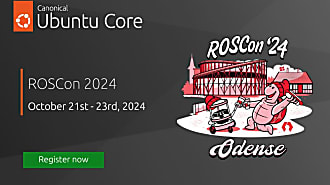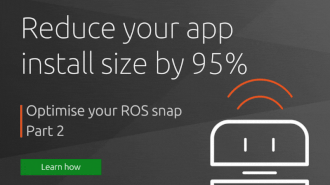Rhys Davies
on 3 October 2019
ROSCon Japan 2019 was a resounding success. We took in the keynote speech from Ryan Gariepy, Co-founder and CTO of Clearpath Robotics. We demoed the first iteration of a Robotics arm from Niryo. Our own Ted Kern gave a lightning talk on type-checked Python in ROS 2, and we spoke to lots of individuals in the Japanese robotics community. Let’s talk about it.
Keynote Speech
The keynote speech was very interesting. Ryan discussed the growing issue of building autonomous vehicles and autonomous robots safely. He gave everyone eight steps to creating safe and human-friendly robots. He proposed intermediary safety standards for people working in the newest areas of robotics and discussed how engineers can proactively design for safety. Statistics and risk assessments were given as reference points for justification and as useful examples of documentation. Effectively, he said when you design robots that work alongside humans, they should be undeniably more safe than if a human were to do the same job. You can hear it yourself in full on the ROSCon JP Youtube channel.
Our Robotic Arm Snap Demo

We assembled our Robotic arm that we were demoing from 3D-printed pieces around a Raspberry Pi (and Dynamixel motors.) It was ported to run with Ubuntu Core and Snaps. It did its job of moving dominos as instructed. But what we showcased was how easy and straightforward it was to update and fix your robot with snaps. It was a great first iteration and we got the message across to some people. But you can look forward to more demos in the future. You’ll be able to catch our second iteration at the next ROSCon in Macau where we will be sporting something more interactive and Ubuntufull.
ROS 2 Lightning Talk
Later in the day Ted, a software developer for Ubuntu Robotics, gave his lightning talk titled: “ROS 2: Typed Checked Python, Static typing in the test toolchain.” It only lasted a few minutes but sparked conversation. We’ve discussed on the blog before about how to use the `ament_mypy` package that we have contributed. But Ted focused on motivating the adoption of type hinting as a good Python practice, and the need to be aware of “optional” language features and external tools due to support of languages beyond ROS 1’s Python 2 and C++.
The ROSCon Japan Community
Beyond all of these things, we were there to talk to the community. We wanted to know about their projects and what they are working on with ROS. We’re very thankful that our colleges in Japan were there to help with interpretation because it meant we got to speak to almost everyone at the conference. Most were already users of Ubuntu and ROS/ROS 2 and were more interested in our roadmaps and plans for ROS 2 development. But there were a surprising number of users who didn’t know about our blog, twitter or website content. Which can be found in Japanese now by the way. We told them to take a look. Each platform talks about our role in ROS development and maintaining the best Robotics security out there.
If you’ve read this far and you’re interested in what’s going on, but you don’t know what ROSCon Japan is, let me tell you. ROSCon JP, the ROS Convention in Japan is what they call a “developer meeting” for people in the ROS community. It was a great opportunity for ROS developers across the country, from beginners to experts, to learn the latest topics and network with the broader ROS community. You can read more about the whole event on their website, ROSCon JP. This event was in Tokyo but coming up soon is the international ROS Developer Conference, ROSCon 2019. This one will be in Macau from October 31 to November 1.




